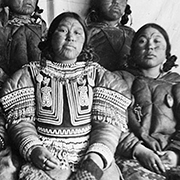CANADA HISTORY
Stocks

The events of October 29th, 1929, often referred to as Black Tuesday, marked a pivotal turning point in both global and Canadian history. The crash of the New York Stock Exchange on that day effectively ended the booming prosperity of the Roaring Twenties and ushered in the Great Depression, a period of severe economic downturn and social upheaval that would last until the outbreak of the Second World War in 1939. While the stock market crash did not single-handedly cause the Great Depression, it symbolized the collapse of an unsustainable economic bubble and served as the catalyst for widespread financial panic.
In Canada, the Great Depression had a profound impact on virtually every sector of society. From the boom towns of Ontario and Quebec, to the vast wheat fields of the Prairies, and the struggling economies of the Maritimes, the Depression exposed the vulnerabilities of Canada's economy. The reliance on exports, particularly to the United States, and the intertwined nature of Canada-U.S. financial institutions meant that when the American economy faltered, Canada felt the repercussions deeply. The story of the Great Depression in Canada is not just a tale of economic decline but a complex narrative that reveals the political, social, and environmental fragilities of the time.
The Economic Impact of the Crash
By the time of the crash in October 1929, Canada had become heavily reliant on the U.S. market for both exports and investment. Canadian industry, particularly in manufacturing and natural resources, had expanded rapidly during the 1920s in response to soaring demand from the United States. However, as the decade drew to a close, this demand began to slow, and by 1929, the situation had become precarious. Canadian industries found themselves overproducing, filling warehouses with goods that could not be sold. As a result, factories began scaling back operations, reducing hours, and eventually laying off workers. This created a devastating chain reaction as unemployment rose, wages dropped, and consumer spending dried up.
Agriculture, particularly on the Prairies, faced its own crisis. Farmers in Saskatchewan, Alberta, and Manitoba had held back much of their 1928 wheat harvest in anticipation of higher prices. However, global wheat prices dropped dramatically, and Canadian farmers found themselves unable to sell their crops. To make matters worse, Argentina and other international competitors began capturing traditional Canadian markets. By 1929, grain elevators were full, but the wheat was not moving, which hurt not only farmers but also the railways that depended on the transport of agricultural products. As railway revenues fell, so did demand for workers, further exacerbating unemployment and economic despair.
The stock market crash revealed the fragility of the global economic system and prompted governments, including Canada's, to take drastic action. Unfortunately, many of these actions only worsened the situation. In an effort to protect domestic industries, countries, including the United States and Canada, raised tariffs, making it even more difficult for Canadian exports to compete in international markets. These tariffs, such as the infamous Smoot-Hawley Tariff in the U.S., created a vicious cycle of protectionism that deepened the economic crisis on both sides of the border.
The Collapse of the Prairie Economy
The Prairies, already struggling with declining wheat prices, were hit hardest by the Depression. Between 1928 and 1932, per capita income in Saskatchewan fell by a staggering 72%, and in Alberta, it dropped by 61%. The situation was further exacerbated by a series of devastating droughts that transformed fertile farmland into barren dust bowls. Poor agricultural practices combined with the unique climatic conditions of the period resulted in soil erosion on an unprecedented scale, and enormous dust storms swept across the Prairies, driving many farmers off their land.
The loss of the buffalo herds in the 19th century had already forced Indigenous and Métis populations to rely more heavily on farming, and now these communities were among the hardest hit by the collapse of the agricultural economy. Many Indigenous peoples were confined to reserves where the Canadian government failed to provide adequate support, exacerbating their suffering during the Depression.
Government Response and Political Consequences
The government of Prime Minister William Lyon Mackenzie King initially downplayed the severity of the Depression, believing it to be a temporary economic downturn. King was reluctant to provide direct federal assistance to the provinces, especially those governed by Conservative administrations. In an infamous speech on April 3, 1930, King declared that he "would not give them a five-cent piece" for unemployment relief, a remark that would haunt him during the upcoming federal election. This statement, along with King’s general inaction, allowed the Conservative Party, led by R.B. Bennett, to seize on the growing public discontent.
In the 1930 federal election, Bennett campaigned on a promise to address the Depression head-on, presenting himself as a dynamic leader who would take immediate action to stabilize the economy. Bennett’s platform was characterized by calls for tariff increases and protectionist policies designed to shield Canadian industries from foreign competition. His tough stance against free trade resonated with voters who were desperate for economic relief, and the Conservatives won a decisive victory. However, Bennett quickly found that the scope of the economic crisis far exceeded the ability of any one country, let alone one politician, to control.
Social and Cultural Impacts
The Great Depression had a profound effect on Canadian society. Unemployment soared to unprecedented levels, with nearly one in four Canadians out of work by 1933. The government’s initial response was inadequate, and as the Depression deepened, soup kitchens, relief camps, and unemployment lines became a common sight in cities and towns across the country. The unemployed and the dispossessed often traveled by freight train in search of work, earning them the nickname "hobos." These men, women, and children rode the rails across the country, hoping for a chance to rebuild their lives, but jobs were scarce.
The suffering was not confined to the unemployed. Even those who retained their jobs saw their wages cut dramatically, and their standard of living plummeted. The drop in wheat exports and the resulting economic collapse in the West also had ripple effects throughout the economy. Manufacturers in Ontario and Quebec who relied on western farmers to purchase their products found their markets drying up, which led to further factory closures and job losses.
In rural areas, the collapse of commodity prices drove farmers off their land, and many families were forced to abandon their farms and move to the cities, where the prospects for employment were just as bleak. The crisis also fueled a wave of outmigration from the Maritimes and other economically depressed regions, as people sought opportunities elsewhere in Canada or the United States.
The Long Road to Recovery
Although Bennett introduced a number of measures to combat the Depression, including public works programs, relief payments, and trade deals, his efforts were largely unsuccessful in reversing the economic decline. The Depression persisted throughout the 1930s, and it was not until the onset of the Second World War that the Canadian economy began to recover fully.
The 1930s also witnessed the rise of new political movements, including the Co-operative Commonwealth Federation (CCF), which would later evolve into the New Democratic Party (NDP). The CCF, led by J.S. Woodsworth, called for more radical changes to the political and economic system, advocating for the nationalization of key industries and the introduction of social welfare programs. The Great Depression thus reshaped the political landscape of Canada, planting the seeds for the future development of the welfare state and greater federal involvement in the economy.
In conclusion, October 29, 1929 marks a critical moment in Canadian history, symbolizing the end of the Roaring Twenties and the beginning of the Great Depression. The crash of the stock market in the U.S. and the subsequent economic collapse had devastating consequences for Canada, where overreliance on exports, declining commodity prices, and government inaction exacerbated the crisis. The impact of the Depression was felt across all sectors of Canadian society, leading to profound changes in the country’s political, social, and economic fabric. The lessons learned during this period would shape Canadian policy for decades to come, from the introduction of social safety nets to a more active federal role in managing the national economy.
Cite Article : www.canadahistory.com/sections/documents




